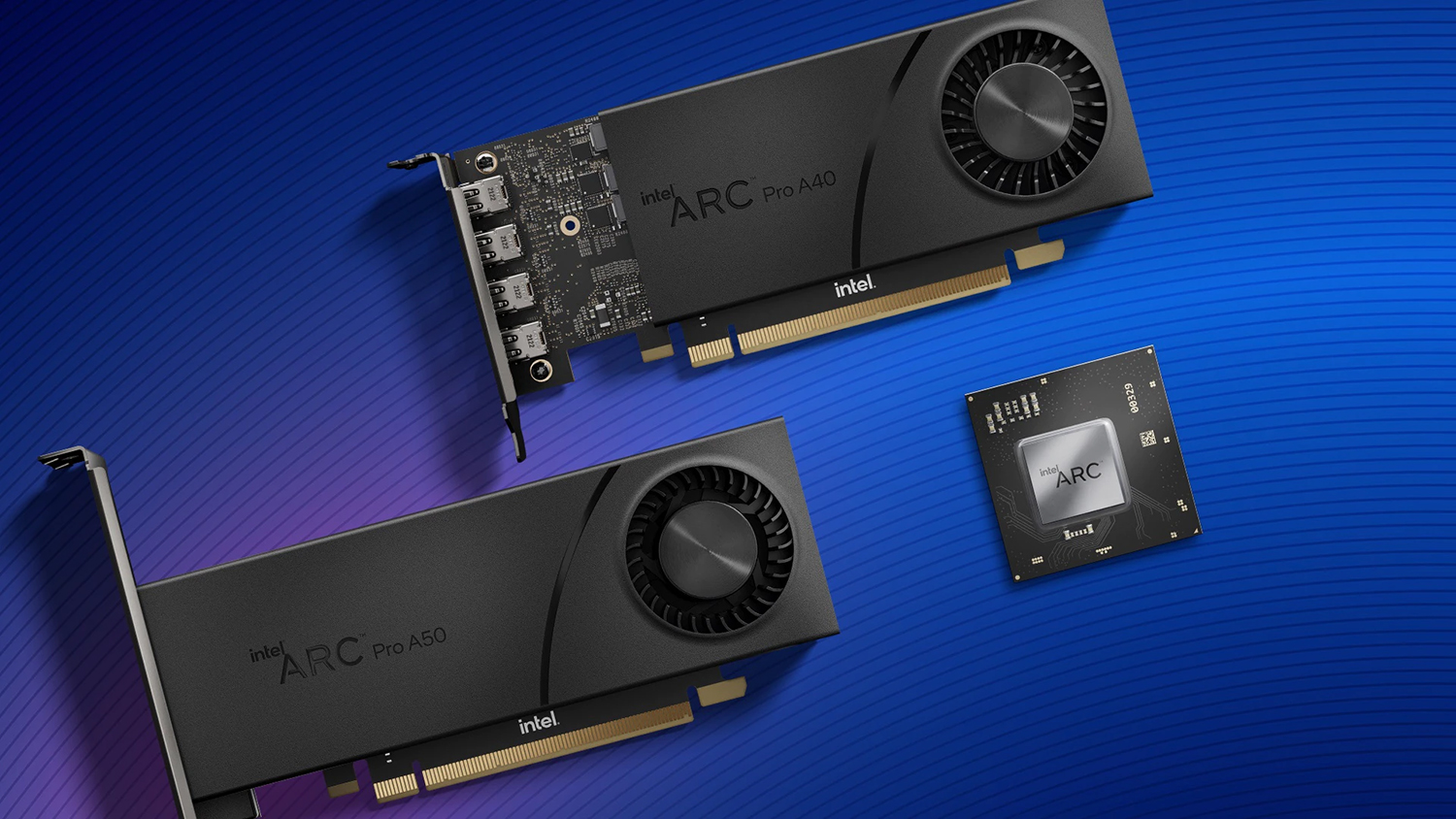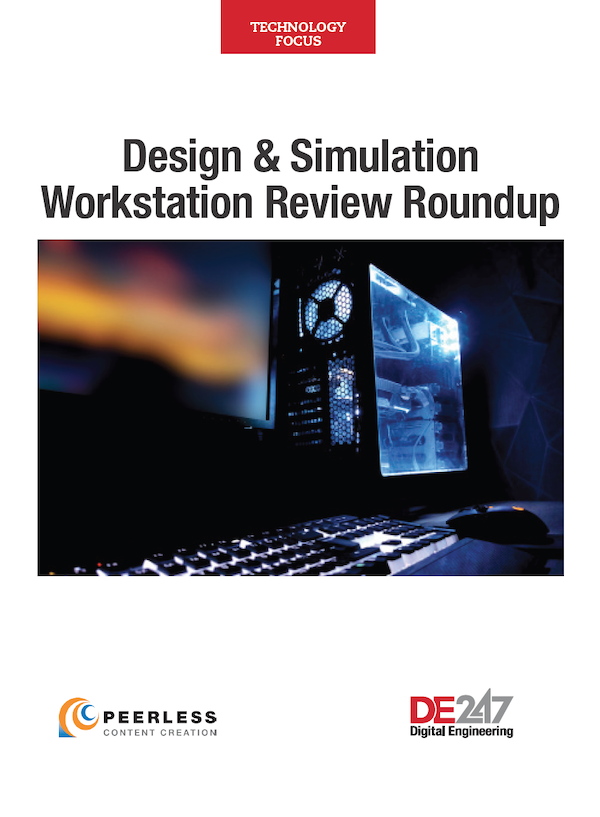SIGGRAPH 2022: Intel Launches Professional Workstation GPUs
CPU maker debuts two professional GPUs for workstations

At SIGGRAPH 2022, Intel releases three GPUs: Intel Arc Pro A30M GPU and the Intel Arc Pro A40 and A50. Image courtesy of Intel.
Latest News
August 16, 2022
At SIGGRAPH 2022, Intel debut three GPUs from the Intel Arc Pro A-series: the Intel Arc Pro A30M (for mobile form factor) and the single-slot Intel Arc Pro A40 and dual-slot Arc Pro A50 (for small form factor desktops). They are set to become available later this year from Intel OEM partners.
This is Intel's latest attempt to penetrate the GPU market, dominated by NVIDIA and AMD. The CPU maker's previous attempt, dubbed the Larrabee Project, fizzled out during the prototyping phase. So the launch of three market-ready GPUs from Intel should justifiably stir up some excitement.
The new Intel GPUs are expected to compete with the entry-level models from the NVIDIA Quadro and AMD Radeon Pro series, both targeting the professional workstation segment. “When paired with compatible Intel processors, Intel Arc Pro GPUs will benefit from Deep Link technology to accelerate AI and media workloads with enabled apps such as HandBrake, DaVinci Resolve, XSplit, and Topaz Video Enhance AI, with more to come,” according to Intel PR.
For Now, Strictly for Workstations
The three Intel Arc Pro GPUs feature 128 execution units and 8 Xe cores. The Arc Pro A30M comes with 4GB memory, and the Arc Pro A40 and A50 with 6GB memory. (For more specs, please visit Intel's product comparison page.)
Workstation GPUs are usually certified for specific CAD and simulation applications, such as SOLIDWORKS, Autodesk Fusion 360, and Ansys. Intel PR said, “We are targeting certifications with leading professional software applications within the architecture, engineering, and construction, and design and manufacturing industries. We'll have more to share at a later date.”
Many NVIDIA and AMD GPUs can be used in workstations or in high-performance computing (HPC) setups for large-scale computing jobs. The new Intel Arc Pro GPUs “have only been validated in consumer and Xeon-based workstation platforms. They may work in a pure server system as long as there’s a proper cooling solution. We didn’t design them for passively cooled environments,” Intel PR clarified.
Operating Outside the NVIDIA CUDA Sphere
Announcing the news on his company blog, Jim Jeffers, Sr. Director, Sr. Principal Engineer, Intel Advanced Ray Tracing Group, said, “The graphics industry has for too long been hampered by proprietary architectures and programming languages, creating 'walled gardens' and vendor-specific code duplication.”
The “walled garden” is a most likely a reference to the CUDA programming environment, developed by GPU maker NVIDIA. As NVIDIA's efforts to promote GPU-accelerated computing gains momentum, the number of applications written in CUDA also grows. Intel's countermeasure is the oneAPI Rendering Toolkit, described by Intel as “an open, cross-industry, standards-based, unified, multiarchitecture, multi-vendor programming model.”
Jeffer said, “Developers and content creators want freedom and choice when running their solutions on the best hardware available without managing multiple codebases, which is what oneAPI delivers.” (For more, read “Intel Sets Its Sights on Graphics with Open Image Denoise.”)
More Intel Coverage
Subscribe to our FREE magazine, FREE email newsletters or both!
Latest News
About the Author
Kenneth Wong is Digital Engineering’s resident blogger and senior editor. Email him at [email protected] or share your thoughts on this article at digitaleng.news/facebook.
Follow DE





